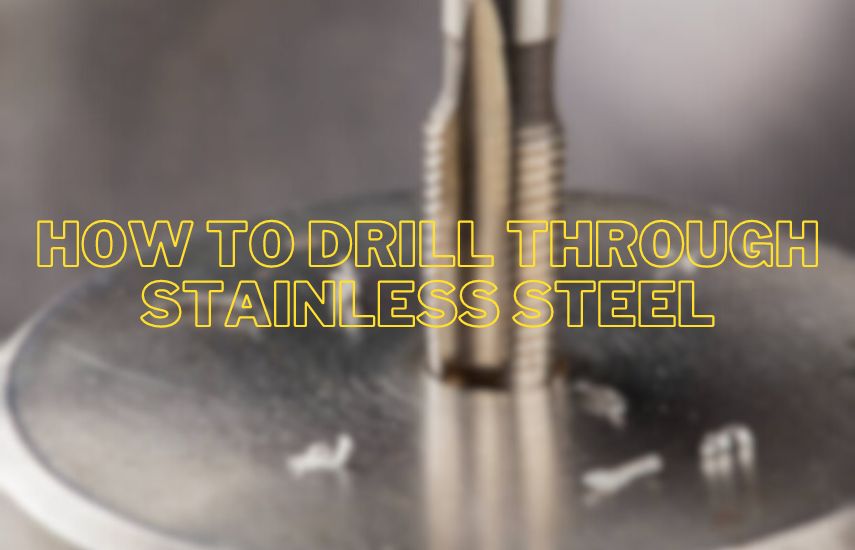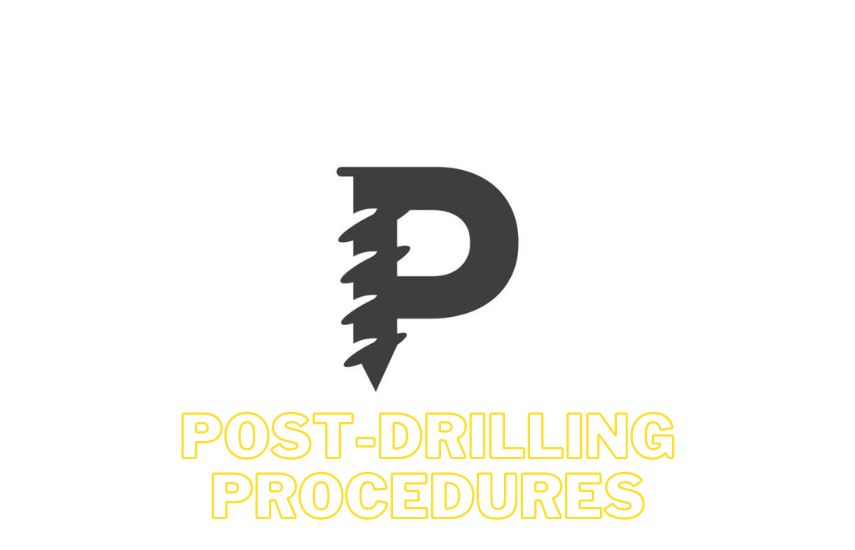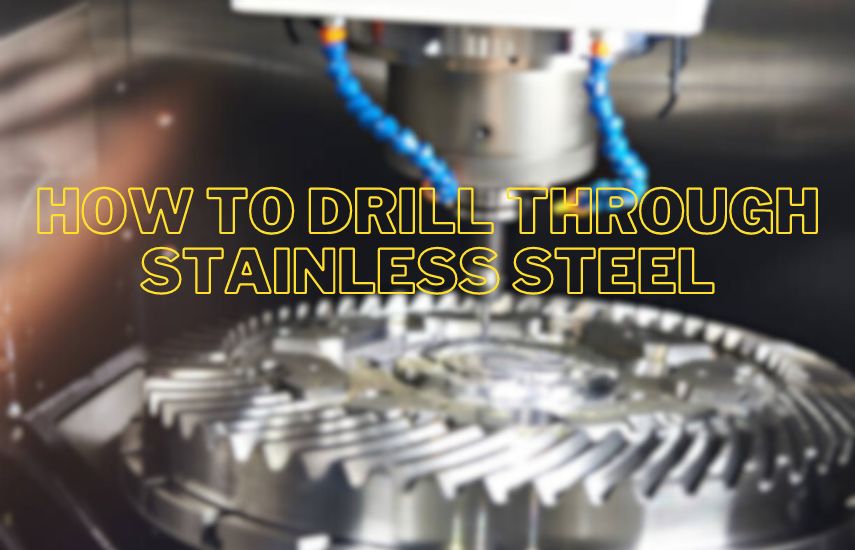Drilling through stainless steel can be a challenging task, and one that requires the right tools and techniques to achieve success. If you’ve ever found yourself struggling to make a hole in this tough, durable material, you’re not alone. Many people turn to the internet for guidance on how to drill through stainless steel, hoping to find the tips and tricks that will help them get the job done right.
How To Drill Through Stainless Steel? To drill through stainless steel, use a high-quality cobalt drill bit and make sure it is sharp. Use low speeds and high pressure to avoid overheating and ensure accuracy. Lubricate the area with cutting oil to prevent damage to the drill bit and workpiece.
In this blog, we’ll explore the best methods for drilling through stainless steel, so you can tackle your next project with confidence.
Choosing the Right Tools and Materials
Drilling through stainless steel can be a challenging task, especially if you don’t have the right tools and materials. Choosing the correct drill bit and ensuring its sharpness is major for achieving a clean and precise hole.
In addition, lubrication and using a center punch and hammer can also make the drilling process smoother. We will discuss the essential factors you should consider when selecting tools and materials to drill through stainless steel.
Selecting the proper drill bit
Stainless steel is a hard material that requires a drill bit made of high-speed steel (HSS) or cobalt. These types of drill bits can withstand the high heat generated during drilling and maintain their sharpness for longer. You should also choose a drill bit with a point angle between 135 and 140 degrees as it will reduce the chances of the bit slipping off the metal surface.
Importance of drill bit materials and coatings
Choosing the right drill bit material and coating can significantly impact the drilling process’s efficiency and durability. HSS drill bits are suitable for drilling through softer stainless steel grades, while cobalt bits are more appropriate for harder grades.
Drill bits with coatings like titanium nitride (TiN) or titanium aluminum nitride (TIAlN) offer greater resistance to wear, heat, and corrosion, making them ideal for drilling through tougher stainless steel grades.
Ensuring drill bit sharpness
A dull drill bit can lead to a poor-quality hole, overheating, and damage to the drill bit itself. It is important to check the sharpness of the drill bit before starting the drilling process. You can do this by gently running your finger along the drill bit’s cutting edge. If it feels rough, it may need sharpening or replacing. Regularly sharpening your drill bits can also help to extend their lifespan.
Using a center punch and hammer
A center punch and hammer can help to make an indentation on the stainless steel surface, creating a starting point for the drill bit. This method will prevent the drill bit from wandering or slipping, resulting in a cleaner and more accurate hole. You can use a center punch and hammer by placing the punch on the desired location and gently tapping it with the hammer.
Lubrication for smoother drilling
Lubrication is an essential step when drilling through stainless steel. It helps to reduce heat, friction, and wear on the drill bit, resulting in a smoother and more efficient drilling process. You can use cutting fluid, oil, or even water as a lubricant. Ensure to apply the lubricant regularly throughout the drilling process and avoid overheating the drill bit.
Choosing the right tools and materials is essential for drilling through stainless steel. Selecting the proper drill bit, considering its material and coating, ensuring its sharpness, using a center punch and hammer, and lubricating the metal surface can significantly impact the drilling process’s success. Following these tips can help you achieve clean and precise holes, even on the hardest stainless steel surfaces.
Preparing the Work Surface

When it comes to drilling through stainless steel, preparation is key. This is especially important since stainless steel is a strong and durable material that can be quite challenging to drill through. We will cover some major steps that you need to take to prepare the work surface before drilling.
Securing the stainless steel piece
Before you start drilling, it’s important to secure the stainless steel piece firmly. This will help prevent it from moving around and getting damaged during the drilling process. You can use a clamp or a vise to hold the piece in place. Make sure that the piece is secured tightly but not so much that it damages the metal.
Marking the drilling location
After securing the piece, the next step is to mark the drilling location. This is crucial to ensure accuracy and precision. You can use a marker or a punch to mark the spot where you want to drill. Make sure to measure and mark the location carefully. You can also use a template or a jig to help you mark the location accurately.
Making an indentation with a center punch
Once you have marked the drilling location, the next step is to create an indentation with a center punch. This indentation will help guide the drill bit and prevent it from slipping while drilling. Place the center punch on the marked spot and tap it gently with a hammer. Make sure to use a punch that matches the size of the drill bit you will be using.
By following these steps, you can prepare the work surface effectively for drilling through stainless steel. Taking the time to prepare the surface will help you achieve accurate and clean results, and also prevent the drill bit from getting damaged. In the next section, we will discuss some important tips to consider when choosing the right drill bit for drilling through stainless steel.
Drilling Through Stainless Steel
Drilling through stainless steel can be a daunting task if you are not familiar with the proper techniques. Stainless steel is a hard and tough material that requires special attention to avoid damaging your tools or injuring yourself. We will guide you through the step-by-step process of drilling through stainless steel, including tips and tricks to make the process easier and safer.
Applying lubricant to the drill bit
One of the most important steps in drilling through stainless steel is applying lubricant to the drill bit. This helps to reduce friction between the bit and the material, which in turn prevents the bit from overheating and becoming dull. There are several types of lubricants that you can use, such as cutting oil, vegetable oil, or even dish soap. Apply a few drops of the lubricant to the tip of the drill bit and to the surface of the stainless steel before starting to drill.
Setting the drill’s speed
The next step is to set the speed of your drill. Stainless steel requires a slower speed than other materials, as drilling too fast can cause the bit to overheat and become dull. Check the manufacturer’s recommendations for the appropriate speed setting for drilling stainless steel. If you are not sure, start with a slower speed and gradually increase it until you find the optimal speed for your specific drill bit and stainless steel thickness.
Starting with a small pilot hole
When drilling through stainless steel, it is best to start with a small pilot hole before gradually increasing the size of the bit. This helps to guide the larger bit and prevent it from slipping or wandering. Use a center punch to make a small indentation in the stainless steel before drilling the pilot hole. This will help to keep the drill bit centered and prevent it from slipping off course.
Increasing the drill bit size gradually
Once you have drilled the pilot hole, you can begin to increase the size of the bit gradually. It is important to use the correct size bit for the hole you are drilling, as using a bit that is too small or too large can cause the bit to become damaged or break. Use a steady, even pressure on the drill to gradually enlarge the hole.
Maintaining proper pressure and angle
As you drill through the stainless steel, it is important to maintain proper pressure and angle to avoid damaging the bit or the material. Use a light to moderate pressure and keep the drill bit perpendicular to the surface of the stainless steel. If the bit starts to vibrate or make a loud noise, reduce the pressure or speed and check the bit for damage.
Cooling the drill bit during the process
Finally, it is important to cool the drill bit during the drilling process. Stainless steel generates a lot of heat when it is drilled, which can cause the bit to become dull or even break. To avoid this, you can use a coolant or simply dip the bit into a container of water periodically during the drilling process. This will help to cool the bit and extend its lifespan.
Drilling through stainless steel requires patience, precision, and the use of the proper techniques. By applying lubricant, setting the drill’s speed, starting with a small pilot hole, increasing the bit size gradually, maintaining proper pressure and angle, and cooling the drill bit during the process, you can achieve successful results and avoid damaging your tools or injuring yourself.
Post-Drilling Procedures

After successfully drilling through stainless steel, there are some crucial post-drilling procedures that you should follow to ensure the best possible results. These procedures include cleaning the drilled hole, dealing with burrs and sharp edges, and inspecting the drill bit for wear. We will discuss each of these post-drilling procedures in detail.
Cleaning the drilled hole
Once you have drilled through the stainless steel, it’s important to clean the hole thoroughly to remove any debris or residue that may have accumulated during the drilling process. You can use a brush or compressed air to clean the hole. It’s also recommended to use a degreaser to remove any oil or lubricant used during the drilling process. Once you have cleaned the hole, ensure that it’s completely dry before proceeding with any further work.
Dealing with burrs and sharp edges
When drilling through stainless steel, you may encounter burrs or sharp edges around the drilled hole. These burrs and sharp edges can be removed using a deburring tool or a file. It’s essential to remove these burrs and sharp edges to prevent injury or damage to the material. Be sure to wear protective gloves and goggles when dealing with burrs and sharp edges.
Inspecting the drill bit for wear
After drilling through stainless steel, it’s important to inspect the drill bit for wear. If the drill bit shows signs of wear or damage, it’s essential to replace it before drilling again. A worn drill bit can cause poor quality holes, break easily, and damage the material being drilled.
To inspect the drill bit, look for signs of wear such as dullness or chipping on the cutting edge. You can also measure the diameter of the drill bit to ensure that it hasn’t worn down. If you notice any signs of wear, replace the drill bit before drilling again.
Tips and Tricks for Drilling Stainless Steel
Stainless steel is a popular and durable material used in many industries, from construction to aerospace. However, drilling through stainless steel can be challenging due to its hardness and resistance to corrosion. We will provide you with tips and tricks on how to drill through stainless steel effectively and efficiently.
Using a Drill Press for Increased Accuracy
A drill press is a valuable tool for drilling through stainless steel because it allows you to apply consistent pressure and keep the drill bit perpendicular to the surface. To use a drill press, you will need to secure your workpiece in place and set the drill bit to the desired depth. Start drilling at a slow speed and gradually increase the speed as you progress. It is important to use coolant or lubricant to prevent overheating and ensure a clean cut.
Keeping Spare Drill Bits on Hand
Stainless steel is a tough material that can quickly dull your drill bits, so it is essential to have spare bits on hand. When drilling through stainless steel, it is best to use cobalt or carbide-tipped drill bits, as they are specifically designed for hard materials. It is also important to match the drill bit size to the size of the hole you want to create.
Practicing on Scrap Material Before the Actual Project
Before drilling through stainless steel, it is a good idea to practice on a scrap piece of the same material to get a feel for the drilling process. This will help you determine the right speed, pressure, and technique to use for your project. It will also allow you to make any necessary adjustments to your equipment and prevent mistakes that could damage your actual workpiece.
Recognizing Signs of Overheating
Drilling through stainless steel generates a lot of heat, which can cause the metal to warp or even melt. Signs of overheating include discoloration of the metal, smoke, and a burning smell. To prevent overheating, use coolant or lubricant while drilling and take breaks to let the drill bit cool down. It is also important to use the correct speed and pressure for the drill bit you are using.
Drilling through stainless steel requires patience, skill, and the right tools. By using a drill press, keeping spare drill bits on hand, practicing on scrap material, and recognizing signs of overheating, you can successfully drill through stainless steel and achieve professional results.
Conclusion (How To Drill Through Stainless Steel)
Drilling through stainless steel requires a high-quality cobalt drill bit, low speeds, and high pressure. Keep the drill bit sharp and lubricate the area with cutting oil to prevent damage. Use a steady hand and avoid overheating to ensure precision and accuracy.
In conclusion, drilling through stainless steel can be a challenging task, but with the right tools and techniques, it can be done efficiently and effectively. It’s crucial to use the appropriate drill bit and lubricant to prevent damage to the stainless steel and ensure a clean and precise hole. Using the proper drilling technique, such as starting with a pilot hole and gradually increasing the drill bit size, can make the process easier and more successful.
It’s essential to remember that practice and patience are key when it comes to drilling through stainless steel, as it may take some time to get the hang of it. By following these tips and tricks, you can successfully drill through stainless steel and complete your projects with ease.









